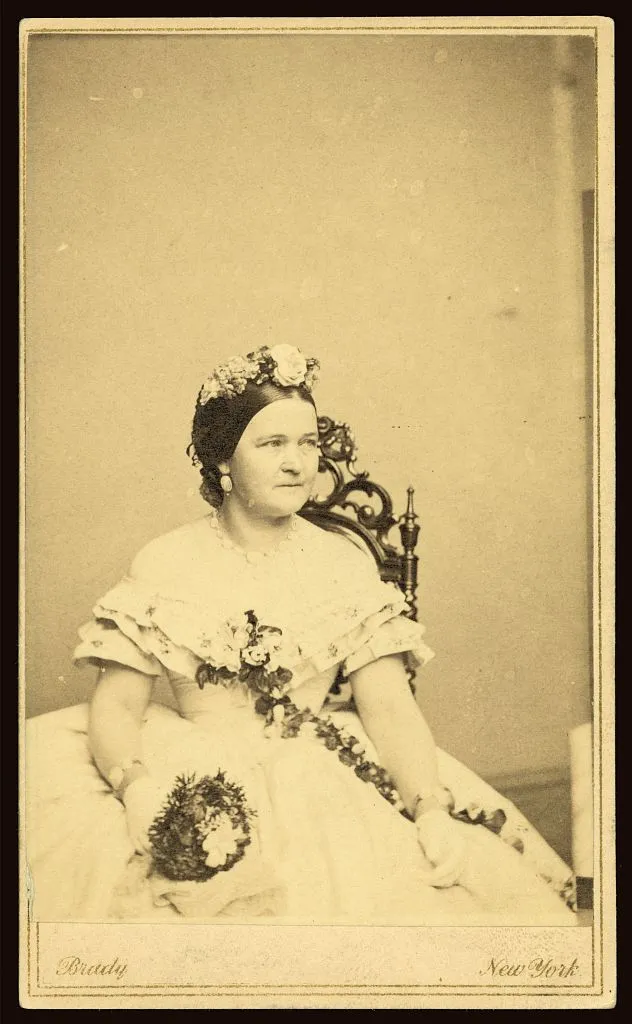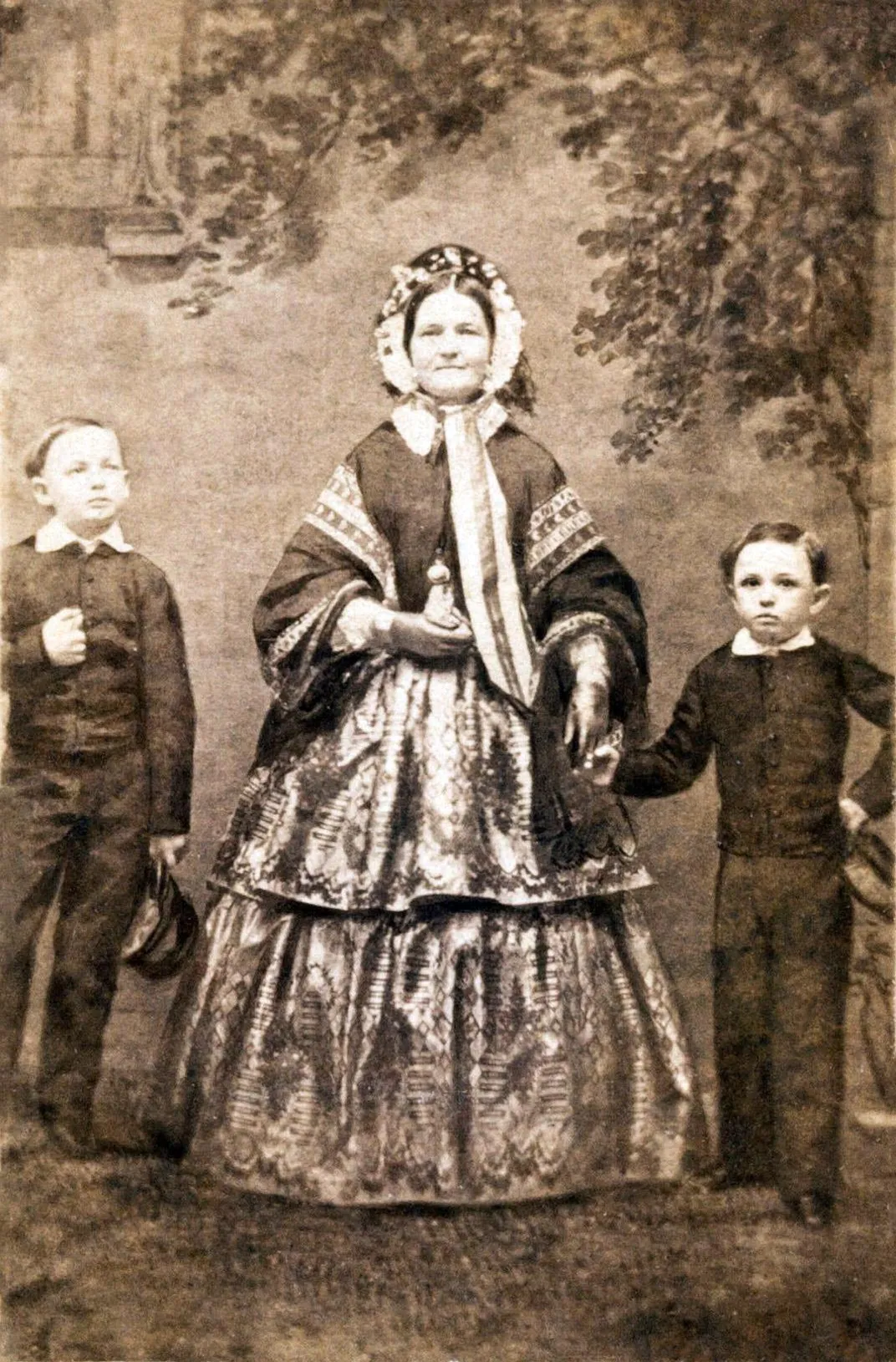Why Historians Should Reevaluate Mary Todd Lincoln’s Oft-Misunderstood Grief
A new exhibition at President Lincoln’s Cottage connects the first lady’s experiences to those of modern bereaved parents
:focal(304x224:305x225)/https://tf-cmsv2-smithsonianmag-media.s3.amazonaws.com/filer/84/84/848478db-a837-4c8f-ba92-5d6e633c28dc/mary_todd.jpg)
History has not been kind to Mary Lincoln. The same accounts that valorize her husband, President Abraham Lincoln, tend to portray his wife as an erratic, scandalous overspender whose prolonged mourning drove her to so-called “madness.”
As Kat Eschner reported for Smithsonian magazine in 2016, some researchers have attempted to retroactively diagnose Lincoln with everything from bipolar disorder to chronic fatigue. But these descriptors tend to obscure the depth of Lincoln’s trauma: namely, the deaths of three of her four children and the assassination of her husband. (Known today as Mary Todd Lincoln, the first lady went by the name Mary Lincoln during her lifetime.)
Instead of sidestepping this pain, a new exhibition at President Lincoln’s Cottage in Washington, D.C. argues that contemporary observers should approach Lincoln’s status as a bereaved mother head-on. In the small display, titled “Reflections on Grief,” curator and interim executive director Callie Hawkins proposes a more empathetic understanding of how Lincoln’s grief shaped her life, according to a statement.
As Hawkins tells Gillian Brockell of the Washington Post, the impetus for the exhibition is personal: Three years ago, she lost a child herself. In addition to providing information about Lincoln’s life, the show features testimonials from contemporary parents who have lost children to violence, sickness and other tragedies.
The exhibition, which is slated to remain open for at least two years, features a sculpture of a white willow tree as its centerpiece. Visitors can write the names of dead loved ones on the tree’s leaves; each name will eventually be transferred to a piece of seed paper and planted, reports the Post.
To curate the exhibition, Hawkins worked with several grief experts, including Joanne Cacciatore, who has written extensively on child death.
“History has not been kind to [Lincoln], in part because society then and now really has a very complicated relationship with death and with grief, and with what is socially acceptable,” Hawkins tells Scott Lamar of WITF’s “Smart Talk.” “I think Mary Lincoln’s grief made so many people uncomfortable. Especially after President Lincoln’s death, people just didn’t know what to do with her.”
Beginning in 1850, Lincoln suffered a series of traumatic losses. Her son Eddie died that year at age 4; in 1862, her 11-year-old, Willie, also died—likely of typhoid fever.
Three years after Willie’s passing, Mary was sitting next to her husband when he was assassinated at Ford’s Theatre. Then, in 1871, her son Tad died of lung disease at age 18. The couple’s eldest and only living son, Robert, and a jury of twelve men ruled Lincoln “insane” and forcibly committed her to a sanitarium in 1875.
Lincoln mourned her losses publicly in a way that made contemporary viewers uneasy. She tore out her hair; wore black for longer than was socially acceptable; and even sought comfort in the advice of Spiritualists, hosting séances in the White House’s Red Room.
When Willie died in February 1862, Lincoln couldn’t leave her bed for weeks, even missing the boy’s funeral. According to Elizabeth Keckley, the first lady’s formerly enslaved modiste and confidante, Lincoln was “an altered woman” after Willie’s death. She never stepped foot in the guest room where he’d died again, as Erin Allen wrote for the Library of Congress blog in 2012.
In a May 29, 1862, letter to a Mrs. John C. Sprigg, Lincoln apologized for her delayed response, noting that her “sadness & ill health” had prevented her from replying sooner.
“We have met with so overwhelming an affliction in the death of our beloved Willie, a being too precious for earth, that I am so completely unnerved, that I can scarcely command myself to write,” Lincoln said.
After Willie’s death, the Lincolns retreated for the summer to a former home for veteran soldiers in northwest D.C. (now the historic site and museum where the exhibition is on display). Just a few months later, in September, Lincoln penned the final draft of the Emancipation Proclamation in one of the home’s 34 rooms, per the National Park Service. The Lincolns would live in this out-of-the-way house for nearly a quarter of Abraham’s presidency.
“They were really desperate to find a place that could offer some solace and a little bit of quiet,” Hawkins tells WITF.
According to the statement, Lincoln herself noted as much in an 1862 letter to a friend, writing, “When we are in sorrow, quiet is very necessary to us.”
“Reflections on Grief” is now on view at President Lincoln’s Cottage in Washington, D.C.
/https://tf-cmsv2-smithsonianmag-media.s3.amazonaws.com/accounts/headshot/nora.png)



/https://tf-cmsv2-smithsonianmag-media.s3.amazonaws.com/accounts/headshot/nora.png)